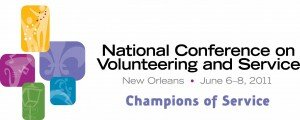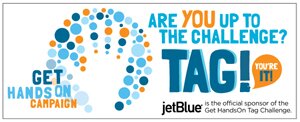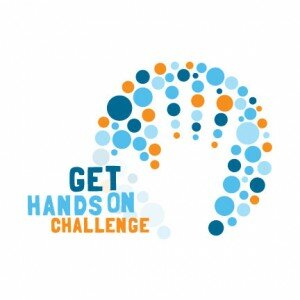Whether you want to grow your membership, raise funds or loans, recruit more followers, gather petition signatures, find volunteers for your cause or connect with your community, Social Media for Social Good: How to Mobilize Your Supporters to Take Action will offer guidance that will help your organization create impact for years to come.
 This special 3-hour workshop at the National Conference on Volunteering and Service will dive deeply into strategy, tactics and tools available to volunteer organizations and nonprofit managers. NCVS has no tech track this year, so get up to speed on the mission-critical social tools in your sector from two of the nation’s leading nonprofit tech leaders.
This special 3-hour workshop at the National Conference on Volunteering and Service will dive deeply into strategy, tactics and tools available to volunteer organizations and nonprofit managers. NCVS has no tech track this year, so get up to speed on the mission-critical social tools in your sector from two of the nation’s leading nonprofit tech leaders.
You have the passion, now learn the latest techniques in this power-packed interactive workshop!
The camp is the Sunday before the National Conference on Volunteering and Service, June 5, from 2 to 5 pm in the New Orleans Convention Center. When you sign up, the room number will be emailed to you before the workshop. There is an additional fee of $99 for the workshop.
When you register for the National Conference on Volunteering and Service, register for session 5638 to sign up for the workshop.
 J.D. Lasica is a social media strategist, nonprofit consultant and author who is considered one of the world’s leading experts on the social Web. He is founder of Socialbrite.org, a learning hub & global consultancy that works with nonprofits and NGOs, and Socialmedia.biz, which works with major brands. A blogger since 2001, J.D. co-founded Ourmedia.org, the first free video hosting site, a month before YouTube.
J.D. Lasica is a social media strategist, nonprofit consultant and author who is considered one of the world’s leading experts on the social Web. He is founder of Socialbrite.org, a learning hub & global consultancy that works with nonprofits and NGOs, and Socialmedia.biz, which works with major brands. A blogger since 2001, J.D. co-founded Ourmedia.org, the first free video hosting site, a month before YouTube.
He has spoken at or given workshops at Harvard’s Berkman Center, Stanford, MIT, NYU, SXSW, the Cannes Film Festival and at events in Paris, Milan and Seoul. J.D. was named one of the Top 40 Silicon Valley Influencers and one of CNET’s Top 100 Media Bloggers. Follow him on Twitter at .
 George Weiner is chief technology officer of DoSomething.org. a not-for-profit that uses communication technologies to empower young people to take action. Under his leadership, the organization has become an innovator in social media, mobile technologies and causes. He oversaw the complete overhaul of the site, landing a People’s Choice Webby Award in the Youth category.
George Weiner is chief technology officer of DoSomething.org. a not-for-profit that uses communication technologies to empower young people to take action. Under his leadership, the organization has become an innovator in social media, mobile technologies and causes. He oversaw the complete overhaul of the site, landing a People’s Choice Webby Award in the Youth category.
George is a self-taught techie and graduate of the University of Pennsylvania. He is a frequent speaker on nonprofit tech issues at forums including the Google Grants Conference, U.N. Youth Summit, National Conference on Volunteering and Service, NTEN and BlogWorld Expo and has guest lectured at NYU and NYIT. Follow him on Twitter at .
Agenda
Social Media for Social Good Camp will focus on practical, down-to-earth tactics and strategies that busy professionals can immediately take to engage supporters. The emphasis is on actionable takeaways. You’ll be introduced to several examples of nonprofits and volunteer organizations that are creating impact – with real-world examples you can learn from.
We encourage interaction and questions during our sessions! what you’d like to see covered, and tell us if you have any lessons learned that you’d like to share.
Some of the questions we’ll cover:
- What strategies & tactics will motivate supporters and newcomers to take specific actions on behalf of my organization or cause?
- What are the essential elements of a successful advocacy campaign?
- How can I successfully use social tools to mobilize volunteers, spread awareness, enlist supporters, raise funds and drive action?
- What metrics are critical to measure? (To drive social media decisions, ask, “What does the data say?” instead of “What does my gut say?”)
- How can storytelling and video advance the mission of my organization?
- Which organizations are creating impact, and what are they doing right?
- What are some of the cutting-edge tools and resources available for change agents looking to make a difference?
- What do you want to know? in advance.
Where possible, we’ll use a roundtable approach and a short small-group breakout session that encourages dialogue and interaction.
This is part of Socialbrite’s nationwide series of social media bootcamps. It has been presented to positive reviews at Personal Democracy Forum in New York and at Sustainatopia in Miami.
Hear what Jeff Pfaff, founder & CEO of mtbMobile, said about taking the bootcamp in this 60-second audio:
Bonus materials!
In addition to this 3-hour live training, during the bootcamp you’ll also be able to access these full-color handouts and guides at no additional cost — and share them with your team!:
- 12 Steps to Mobilize Your Cause – Summary of all the action items you need to conduct a successful campaign.
- Team Collaboration – Tools to help you work with other organizations or your own team members in multiple locations.
- 15 Best Practices for the Social Web – High-level principles to help you succeed in social media.
- 12 Social Action Hubs – Selectively plug into some of these online communities and crowdsource platforms to promote a social cause.
- 40 Hashtags for Social Good – Use these Twitter hashtags as you tweet for your cause to gain wider visibility and viral help from the community.
- A Mobile Activism User’s Guide – A 16-page guide introducing you to the world of mobile activism and showing you how you can take your organization mobile.
- 10 Mobile Apps for Social Good – Apps for your iPhone or Android.
- 6 Twitter Tips for Change-Makers – A series of tips to help your organization use Twitter more strategically.
We’ve never had a disappointed attendee! Please register now!

 Today’s post comes from David Ray, Chief Strategy and Public Policy Officer for Points of Light Institute.
Today’s post comes from David Ray, Chief Strategy and Public Policy Officer for Points of Light Institute.
 by Jen Martin, Senior Specialist, Office of Volunteer and Civic Engagement,
by Jen Martin, Senior Specialist, Office of Volunteer and Civic Engagement, ![CTG_red[1]](../wp-content/uploads/2010/10/CTG_red1-150x150.jpg) Nationwide, AARP and AARP Foundation are launching anti-hunger initiatives including volunteer-led food drives
Nationwide, AARP and AARP Foundation are launching anti-hunger initiatives including volunteer-led food drives 

 In our session today, we hope to gather the collective wisdom of those in the room to create a more complete list, but as we head in to our workshop, I’ve outlined a few of our ideas for applying the best practices of traditional volunteer management to distributed action in the social space.
In our session today, we hope to gather the collective wisdom of those in the room to create a more complete list, but as we head in to our workshop, I’ve outlined a few of our ideas for applying the best practices of traditional volunteer management to distributed action in the social space. Make folks feel part of something larger than themselves – all of us want to find meaning in our lives. You’re not just asking for help, you’re offering people an opportunity to contribute, to participate in making a difference. Let this help you overcome your fear that you’re burdening folks with your request.
Make folks feel part of something larger than themselves – all of us want to find meaning in our lives. You’re not just asking for help, you’re offering people an opportunity to contribute, to participate in making a difference. Let this help you overcome your fear that you’re burdening folks with your request. Make it easy – remember volunteers have to be eased into a commitment. Make it quick and easy to take immediate action, ask for specific actions and small commitments first and work up to larger commitments.
Make it easy – remember volunteers have to be eased into a commitment. Make it quick and easy to take immediate action, ask for specific actions and small commitments first and work up to larger commitments.










 The report, (which Heather McLeod Grant and Katherine Fulton have made eminently readable) outlines some of the key lessons KaBOOM! has learned since their experimentation online began.
The report, (which Heather McLeod Grant and Katherine Fulton have made eminently readable) outlines some of the key lessons KaBOOM! has learned since their experimentation online began.
 KaBOOM! learned that it needed to provide ‘high touch’ support to online volunteer leaders who took on the task of planning a local playground build.
KaBOOM! learned that it needed to provide ‘high touch’ support to online volunteer leaders who took on the task of planning a local playground build. Specifically, KaBOOM! is developing an online, points-based recognition program for active volunteers and they’ve discovered that the chance of winning even a relatively small financial grant for a playground project can serve as a significant incentive.
Specifically, KaBOOM! is developing an online, points-based recognition program for active volunteers and they’ve discovered that the chance of winning even a relatively small financial grant for a playground project can serve as a significant incentive.
 Like KaBOOM!, HandsOn Network cares about increasing the number of people volunteering in the world.
Like KaBOOM!, HandsOn Network cares about increasing the number of people volunteering in the world.
